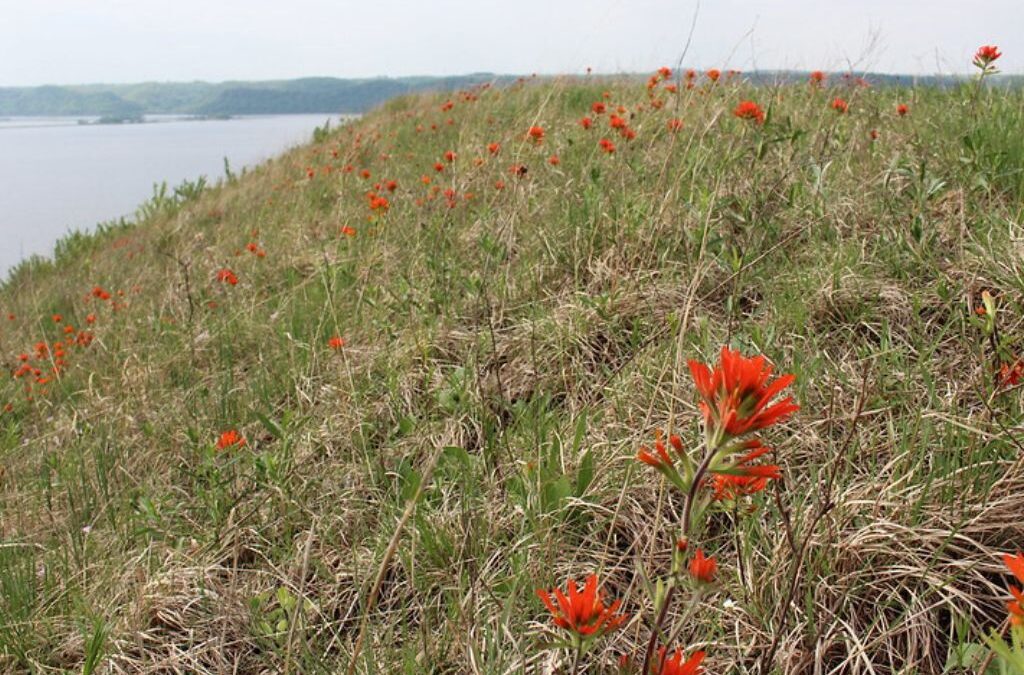Wisconsin’s first grassland climate change adaptation project is underway at Rush Creek State Natural Area.

Indian paintbrush on the prairie at Rush Creek State Natural Area, the site of a new climate change adaptation site in Wisconsin. Photo: Caitlin Williamson
Climate change is impacting Wisconsin, but we can make our lands and waters more resilient to it.
Rush Creek State Natural Area is one of Wisconsin’s greatest treasures. Its 2,800 acres of public protected habitat along the Mississippi River are home to nearly 50 Species of Greatest Conservation Need. It contains one of the largest remaining prairies of its kind in the Midwest, forests, and spring-fed streams.
NRF is working with our partners to restore and re-connect 970 acres at Rush Creek, protecting a huge two-mile stretch of this important and biodiverse landscape. The work will include a mix of traditional ecological restoration and newer climate adaptation practices.
This is a great opportunity to preserve and protect a large tract of land for wildlife and change how habitat is managed to align with expected future climate conditions.
We hope this first-of-its-kind project will inspire other land managers in Wisconsin to plan for climate change.
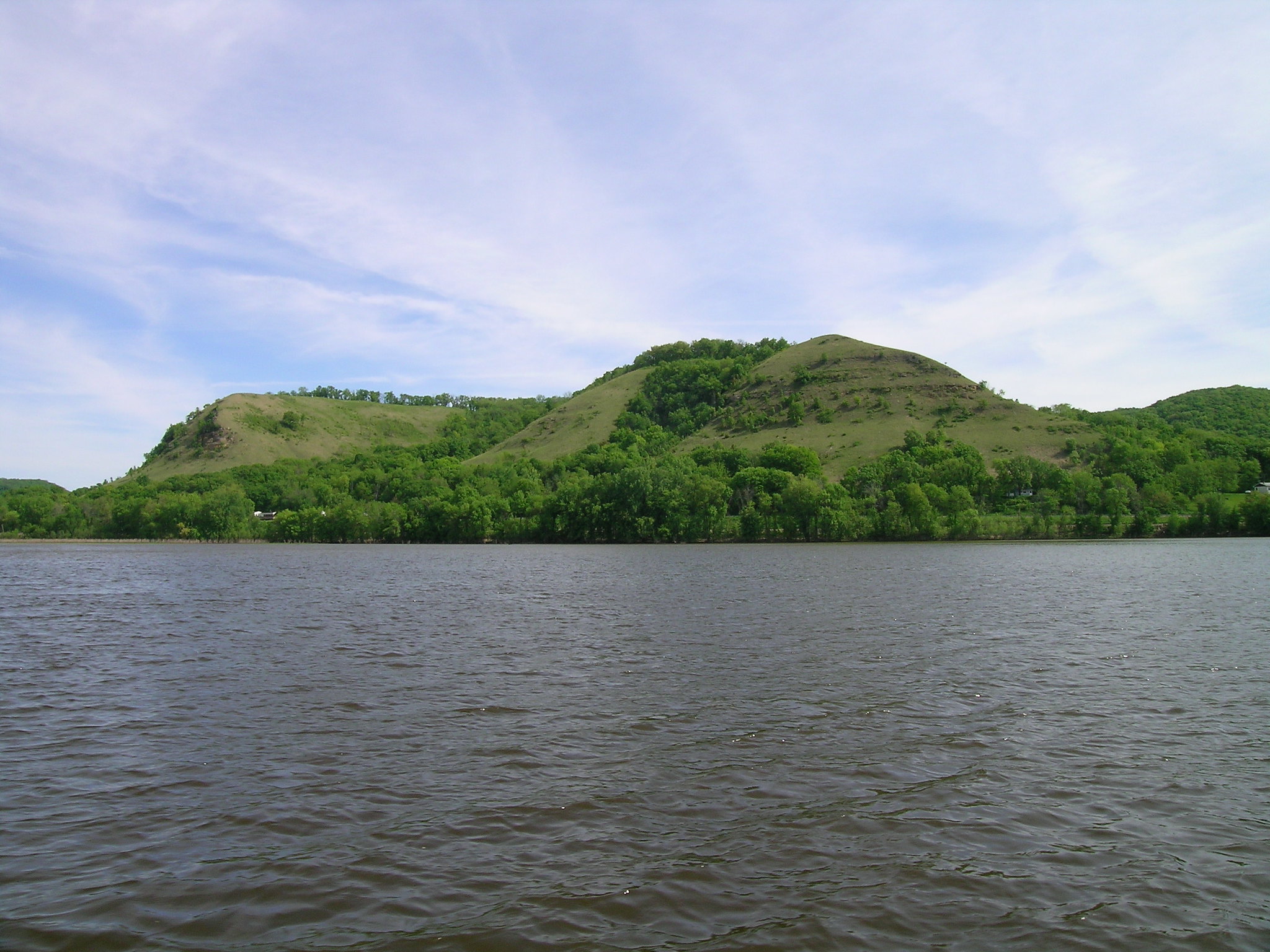
The south unit at Rush Creek State Natural Area as seen from the water. Photo: Armund Bartz
Climate Change in Wisconsin
Climate change is affecting Wisconsin in several ways. New evidence documented in the 2021 Wisconsin Initiative on Climate Change Impacts Assessment Report shows continued warming, with statewide temperatures warmer by about three degrees Fahrenheit, and precipitation increased by more than 20 percent since 1950. We are also seeing more frequent extreme rainfall events that have led to severe flooding across the state. By the end of the century, these storms will probably be twice as frequent throughout Wisconsin.
Wisconsin’s native landscapes—our prairies, savannas, wetlands, and forests—are already stressed by habitat loss and fragmentation, invasive species, fire suppression, excessive deer browsing, and nutrient runoff. Climate change amplifies all these threats. Warmer winters and less snow are impacting populations of species like ruffed grouse, snowshoe hare, and common loon. If we don’t act, these places will become less diverse and complex, and wildlife that depend on specific habitat will disappear.
Despite these challenges, key actions can help make Wisconsin’s lands and waters more resilient to a changing climate.
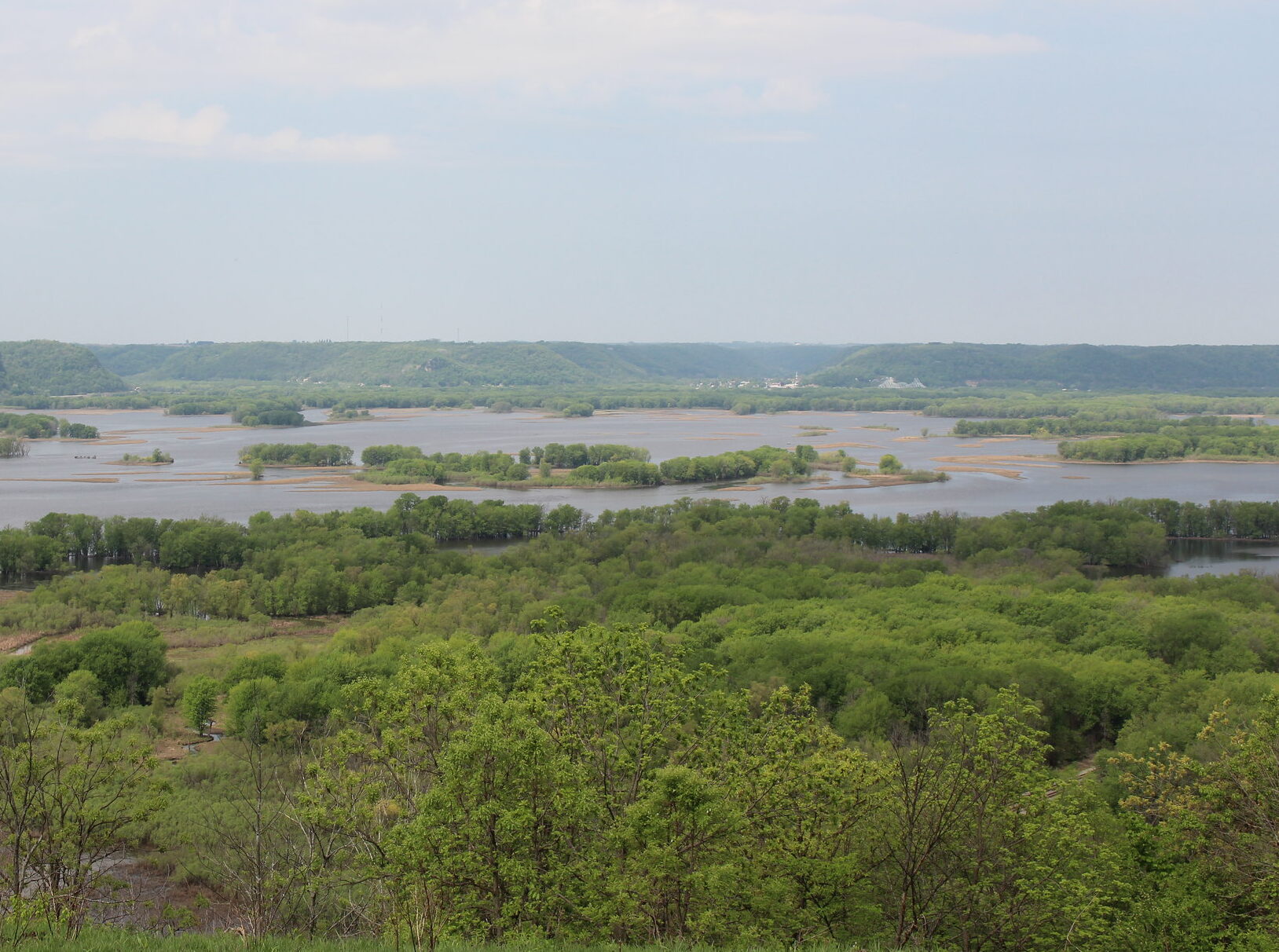
Rush Creek State Natural Area, overlooking the Mississippi River, on an NRF Field Trip. Photo: Caitlin Williamson
Rush Creek: A Special Place
Rush Creek State Natural Area is located along the Mississippi River in southwest Wisconsin—right along the Great River Road, between Prairie du Chien and La Crosse. Owned by the Wisconsin Department of Natural Resources, Rush Creek protects 2,800 acres of high-quality habitat: prairies, savannas, and forests.
The site is well known for its ecological significance. It has continentally significant features of the Driftless Area and also runs along a critical migratory bird flyway. It is a designated Conservation Opportunity Area and Important Bird Area, and it protects a mosaic of globally rare natural communities, including one of the most extensive dry prairie remnants in the Midwest, as well as oak savanna, oak-hickory and floodplain forest, and two miles of spring-fed streams.
The Nature Conservancy’s Resilient and Connected Landscapes Project—which mapped resilient lands and significant climate corridors across the country—ranks Rush Creek as a highly strategic site for climate adaptation.
And to top it off, this landscape is one of the very first sites supported by the Natural Resources Foundation—back in 1993!

Cerulean Warbler spotted on an NRF field trip. Photo: Dennis Malueg
The work taking place through this project will help dozens of species. Nearly 50 documented rare and declining wildlife species make Rush Creek home thanks to its diverse topographical and landscape features.
Species that will benefit include grassland birds like the Henslow’s Sparrow, forest-interior birds like the Cerulean Warbler, the critically imperiled Eastern Pipistrelle Bat, the Leadplant Flower Moth, and many others.
Planning for climate change
Knowing the importance of this site, the Wisconsin DNR completed a comprehensive climate adaptation planning process for Rush Creek in the winter of 2020-21. They partnered with the Northern Institute of Applied Climate Science to complete the Adaptation Workbook planning process, which is a climate change tool for land management and conservation.
Through the process, the team found that:
- Rush Creek State Natural Area may provide opportunities for plant and animal species to shift into new areas over time in response to changing environmental conditions and disturbances. The intact and connected diverse ecosystems at Rush Creek will offer a landscape for plant and wildlife species to find refuge and migrate in adjustment to changing conditions.
- Climate change builds a strong case for continuing efforts to actively restore native oak and prairie ecosystems. Fire adapted oak and prairie native ecosystems may be better able to cope with climate pressures, and be more tolerant of warmer, drier conditions.
You can learn more about the Adaptation Workbook process and findings at Rush Creek here.

In the north unit of Rush Creek SNA, one of the remnant prairie openings smokes after a fall prescribed burn overlooking the Mississippi River. Prescribed fire is a vital tool in bluff prairie management. Photo: Justin Nooker, Wisconsin DNR
Trying it out at Rush Creek
We are piloting these solutions in a new climate demonstration project at Rush Creek State Natural Area. We’re excited to be launching Wisconsin’s first grassland climate change adaptation project!
The Natural Resources Foundation and the Wisconsin DNR will be making Rush Creek State Natural Area more resilient to a changing climate. We’ll be restoring the integrity and connectivity of its natural communities—the prairies, savanna, and forest found at the site—providing long-term viability for the numerous wildlife and plant species currently found at Rush Creek, and others that might move there as the climate continues to change.
This is possible thanks to a $300,000 grant from the Wildlife Conservation Society’s Climate Adaptation Fund – the support to establish the Climate Adaptation Fund was provided by a grant to WCS from the Doris Duke Charitable Foundation – with matching funds from the Brico Fund, Caerus Foundation, Ed and Patty Neumueller, the Wisconsin Department of Natural Resources, and two of the Foundation’s conservation endowment funds, the Wisconsin’s Climate Response Fund and the Wisconsin Pollinator Protection Fund. It takes a village, and we are deeply grateful for the many funders and partners bringing this to life.
This is a first-of-its-kind climate resilience project in Wisconsin that we hope will inspire many others.
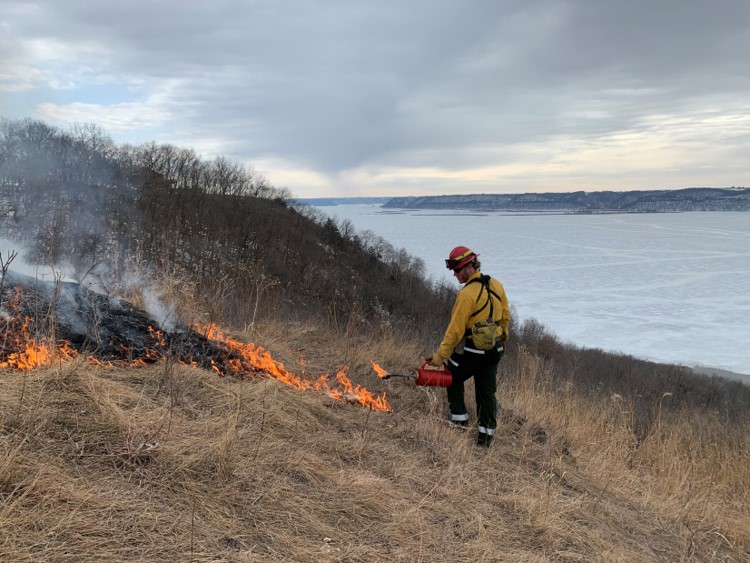
Prescribed burning is a key strategy for climate change adaptation in Wisconsin landscapes. Photo: Justin Nooker, Wisconsin DNR
What’s happening on the ground
This project will restore and re-connect 970 acres at the Rush Creek property, covering a two-mile stretch of prairie, savanna, and forest. The work will include a mix of traditional ecological restoration and newer climate adaptation practices from the Adaptation Workbook process. The resulting landscape mosaic will provide a continuum of resilient, intact, and connected habitat for hundreds of wildlife and plant species.
The work can be categorized into three primary areas:
- Re-connecting and restoring the two-mile ‘archipelago’ of remnant dry prairies that have become overgrown with woody vegetation and invasive species
- Restoring oak savanna and woodlands through prescribed fire and thinning shade-loving trees, and
- Converting agricultural cropland on the property into native prairie and savanna, including creating buffer strips at the interface with the oak-hickory forest.
This effort will feature innovative practices, such as the development of a first-of-its-kind tool that will allow land managers to select native plants that are ‘climate smart’—resilient in the face of a changing climate—by considering a wide array of traits including life history, root type, bloom phenology, soil conditions, and more. The project will also employ a technique called regional admixture provenancing, which increases genetic diversity in native seed plantings while keeping seed origins to a regional scale.
The work at Rush Creek will also provide an important source of carbon storage. Intact grasslands and forests are crucial to storing carbon in the U.S., yet the Midwest has lost up to half its carbon due to agricultural conversion. Restoring cropland to prairie and improving the existing prairie, savanna, and forests at Rush Creek will all enhance carbon storage.
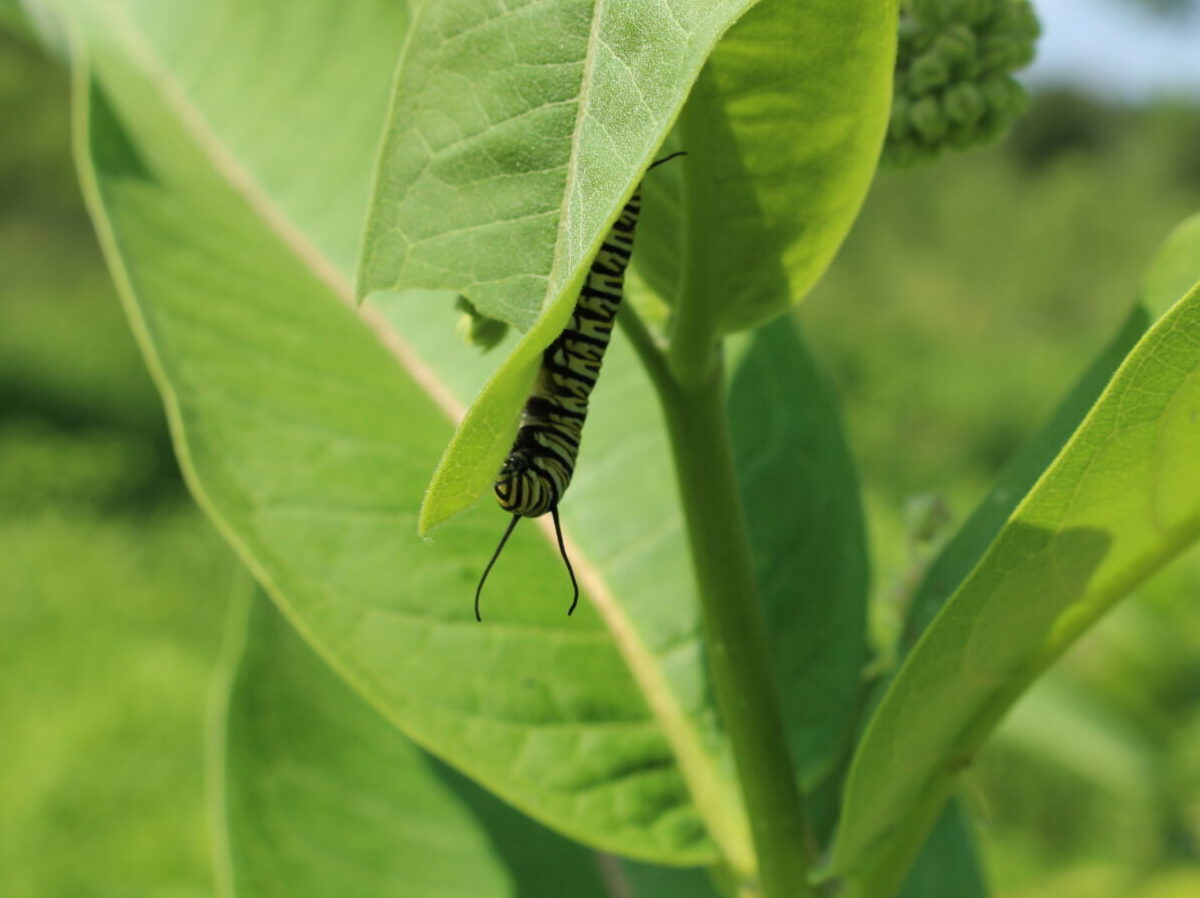
Monarch caterpillar on milkweed at Havenwoods State Forest. Photo: Caitlin Williamson
Expected Impacts
Our vision for this project is that the resulting landscape mosaic at Rush Creek will offer a continuum of resilient, intact, and connected habitat for hundreds of wildlife and plant species. Connections between large tracts of land with diverse, healthy native plant communities can help species move as the climate changes.
We expect that this project will build climate resiliency by:
- Restoring large, variable habitat mosaic that provides climate refugia and climate corridors
- Managing for healthy natural communities to boost resiliency
- Restoring natural gene flow of prairie and savanna specialist species, and mimic gene flow when fragmentation limits this
- Reducing runoff and providing buffers from erosion
- Enhancing long-term resilience of prairie plantings
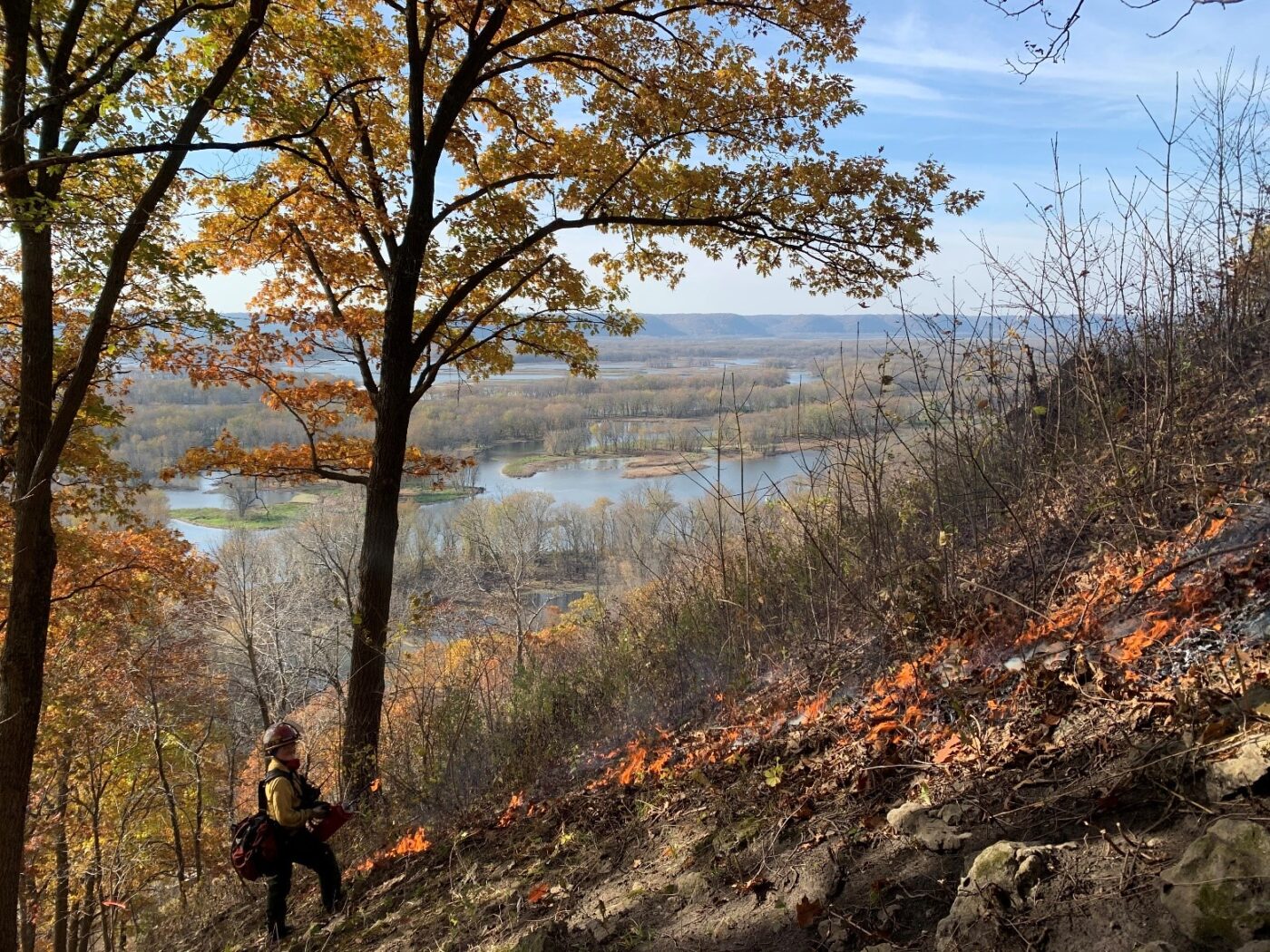
Prescribed burn Ignition Specialist carefully burns the side of the bluff at Rush Creek SNA. More than 100 acres were burned at this site in total. Photo: Justin Nooker, Wisconsin DNR
Partners
The project is a partnership between the Natural Resources Foundation of Wisconsin and the Wisconsin Department of Natural Resources, and we are grateful and excited to be working with many other partners to inform and support the project as well. The Northern Institute for Applied Climate Science (NIACS), Wisconsin Initiative on Climate Change Impacts (WICCI), and The Nature Conservancy have been important supporters of the project, providing valuable guidance and sharing resources to advance this effort.
We are also working with the Ho-Chunk Nation to understand Traditional Ecological Knowledge of the area and collaborate on restoration efforts. And because the site is located right above the Great River Road Scenic Byway, we plan to work with the Department of Transportation, local communities, and the Great River Road collaborators, as well as local farmers and private landowners to expand the impact of the project.


Common Loon with chicks. Photo: Bruce Bartel
How you can help with climate change adaptation in Wisconsin
We are very excited about this project and know there are other opportunities to make our incredible state of Wisconsin more resilient to the changing climate.
We hope that the Rush Creek project, which is evidence-based, built on strong partnerships, and provides a holistic perspective, will be an inspiration for other land managers and caretakers in Wisconsin.
Here are some ways that you can get involved and support these efforts:
- Join us on a Field Trip to Rush Creek (including this trip in September) or learn about other climate topics on other open trips.
- Learn more about climate change in Wisconsin in the 2021 Assessment Report from the Wisconsin Initiative on Climate Change Impacts, a comprehensive report explains the issues and impacts of our warming climate on Wisconsin residents and describes the scientific progress made towards solutions.
- Learn about the Adaptation Workbook. You can use a map to explore how climate change may affect your region, look at adaptation “menus” that provide a curated list of adaptation actions by topic, and more.
- Make a gift to support Wisconsin’s Climate Response Fund. This fund supports priority projects and programs that respond to climate impact conservation and education needs in Wisconsin, including this important work at Rush Creek.
Prepared by Caitlin Williamson, Director of Conservation Programs
